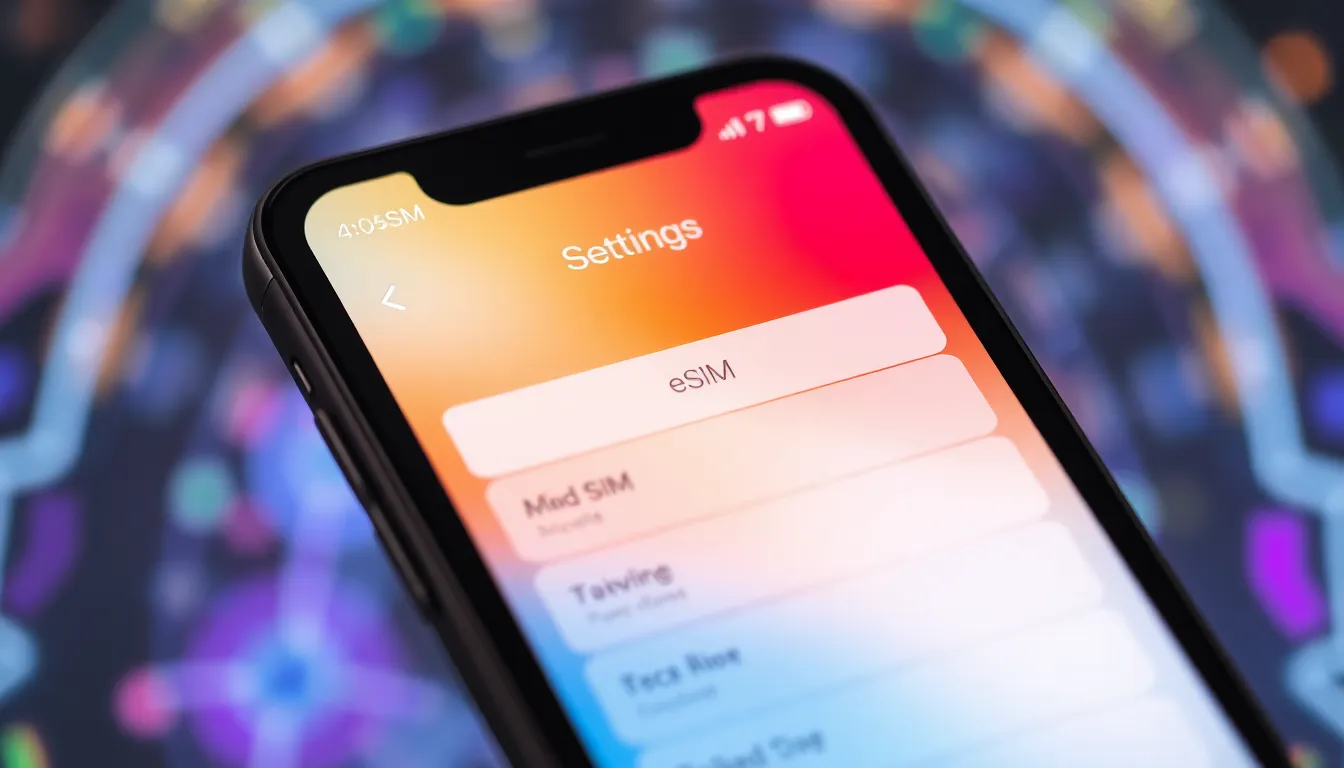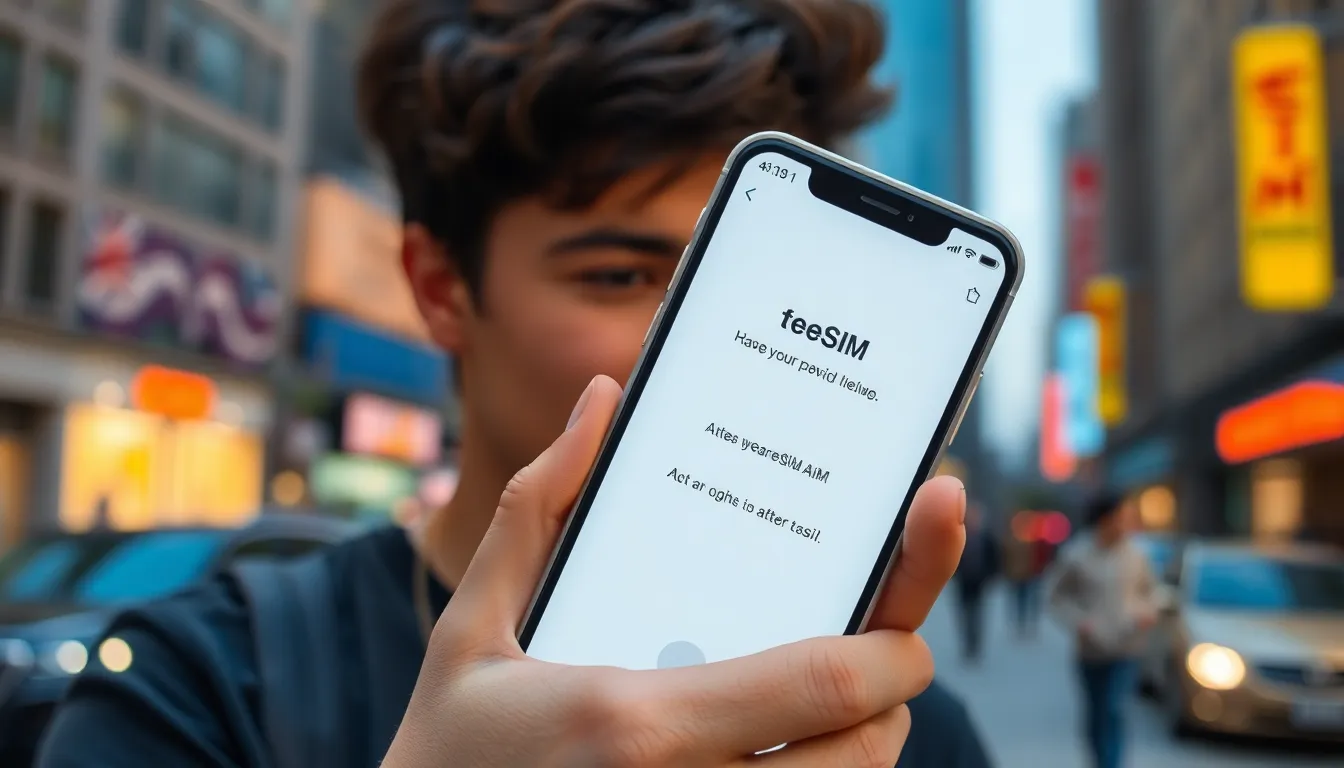Table of Contents
ToggleIn a world where staying connected is more important than ever, eSIM technology is shaking things up. Gone are the days of fumbling with tiny SIM cards that seem to vanish into thin air. Instead, iPhone users are embracing the magic of eSIMs, which allow for seamless connectivity without the hassle. But just how many iPhones have jumped on this digital bandwagon?
Overview of eSIM Technology
eSIM technology simplifies connectivity for iPhone users by replacing traditional physical SIM cards. Users can activate cellular plans without inserting a SIM card, making it more convenient. Compatibility exists with several iPhone models, promoting greater flexibility.
Carrier support varies, but major providers in the US, like Verizon and AT&T, offer eSIM services. Up to five different eSIMs can be stored in a device, although only one can be active at a time. This allows for quick switching between carriers and plans without the hassle of changing physical SIM cards.
Security benefits also arise from using eSIM technology. Since eSIMs are embedded within the device, the risk of losing or damaging a SIM card decreases. Remote provisioning enhances user privacy by ensuring personal data stays secure.
Transitioning to eSIM technology has benefited frequent travelers. Users can switch to local carriers abroad, often avoiding high roaming fees. Moreover, multiple profiles enable users to maintain a home number while adopting local options.
iPhones starting with the iPhone XS, iPhone XS Max, and iPhone XR support eSIM. Subsequently, all released models feature this technology, expanding accessibility for users. Updates and improvements continue as eSIM technology becomes more mainstream in the mobile industry.
Overall, eSIM technology represents a significant shift in how users connect their devices. By embracing this innovation, iPhones enhance user experiences and provide greater adaptability in today’s mobile landscape.
Compatibility of eSIM iPhones

eSIM technology is compatible with several iPhone models, allowing users to take advantage of its benefits.
List of eSIM Enabled Models
eSIM functionality starts with the iPhone XS, XS Max, and XR. The technology extends to newer models, including the iPhone 11, 12, 13, and 14 series, as well as the iPhone SE (2nd generation) and later. Users can enjoy the flexibility offered by eSIM on all these devices. Since these models support multiple eSIMs, they provide greater options for managing cellular plans.
Key Features of eSIM Technology
Security stands out as a critical feature of eSIMs. By enabling remote provisioning, eSIM eliminates risks associated with physical SIM cards, reducing loss or damage. User privacy benefits from this technology through secured data storage and management. Flexibility marks another key advantage, allowing users to switch between carriers with ease. Lastly, eSIM simplifies connectivity, making it easier to adopt local plans while traveling abroad without incurring roaming fees.
Advantages of Using eSIM
eSIM technology offers numerous advantages for iPhone users. First, it simplifies the process of switching carriers, as users can change plans without needing a physical SIM card. This convenience appeals especially to those who frequently travel or want to explore different service options.
Another benefit lies in the ability to store multiple eSIM profiles on one device. Users can manage up to five eSIMs, allowing a quick transition between personal and business plans. Flexibility becomes paramount, enabling users to adapt to various situations without hassle.
Increased security is a significant advantage of eSIM. With no physical card to lose or damage, the risk of SIM-related issues decreases considerably. Additionally, the remote provisioning feature enhances privacy by limiting unauthorized access to personal data.
Cost savings represent another compelling reason to use eSIMs. Travelers can easily switch to local carriers, avoiding hefty roaming charges. Keeping a home number while using local services becomes straightforward, making travel more economical.
Enhanced connectivity also plays a critical role in eSIM’s appeal. Users can maintain reliable service with multiple network support even when traveling internationally. Optimizing mobile experiences enhances overall user satisfaction.
Overall, eSIM technology transforms connectivity for iPhone users, providing convenience, security, and cost-effective solutions tailored to modern lifestyles.
How to Activate eSIM on iPhone
Activating eSIM on an iPhone involves a few straightforward steps that enable users to connect without needing a physical SIM card. This process varies slightly depending on the carrier and iPhone model.
Steps for Activation
- Open the Settings app on the iPhone.
- Tap on Cellular or Mobile Data.
- Select Add Cellular Plan.
- Scan the QR code provided by the carrier or enter the activation details manually.
- Follow the on-screen instructions to complete the activation.
These steps ensure a smooth transition to eSIM technology. Users can rename their plans for easy management once the eSIM is active.
Troubleshooting Common Issues
Activation problems can occur for various reasons. First, ensure the device supports eSIM by checking the model specifications. If a QR code fails to work, verify it’s scanned correctly and that the data plan is active. Restarting the iPhone can also resolve temporary glitches.
For users experiencing connectivity issues, confirming the correct settings and ensuring network compatibility is crucial. Consulting the carrier’s customer support may provide additional assistance in resolving persistent problems.
Future of eSIM in iPhones
Expansion of eSIM technology in iPhones suggests a promising future for mobile connectivity. Apple continually enhances iPhone models to support eSIM capabilities. The transition from physical SIM cards to eSIM indicates a shift toward more flexible and efficient mobile services.
Increasing adoption of eSIMs allows users to easily switch between carriers and plans. Enhanced customization options enable individuals to manage personal and business profiles seamlessly. Users can store multiple eSIMs, providing the freedom to select the most suitable plan for their needs.
Growth of eSIM technology enhances security measures associated with cellular connectivity. Users benefit from reduced risks of lost or damaged SIM cards, along with improved privacy features. Remote provisioning streamlines data management and strengthens user protection.
Expanding eSIM functionality especially appeals to frequent travelers. They can access local carriers abroad, thus avoiding excessive roaming charges while retaining their home number. Maintaining connectivity becomes simpler and more cost-effective during international trips.
Apple’s focus on integrating eSIMs reflects a broader trend in the telecommunications industry. Increased support from various carriers signifies a shift towards universal compatibility. As market demand for eSIMs rises, it’s likely that future iPhone models will further enhance these capabilities.
Continuing advancements in this technology promise even greater reliability and performance. Users can expect improved connectivity and service quality, even in areas with limited coverage. Brands such as Apple position themselves at the forefront of this technological evolution, laying the groundwork for the next stages in mobile connectivity.
eSIM technology is revolutionizing how iPhone users connect and manage their mobile services. With compatibility across various models and the ability to store multiple eSIM profiles, users enjoy unparalleled flexibility and convenience. The security enhancements and cost savings, especially for travelers, further solidify its appeal.
As Apple continues to innovate and expand eSIM capabilities in future models, users can expect even more reliable and efficient connectivity options. This shift not only simplifies carrier switching but also aligns with the growing demand for seamless mobile experiences in an increasingly connected world. The future of mobile connectivity looks promising with eSIM technology leading the way.




